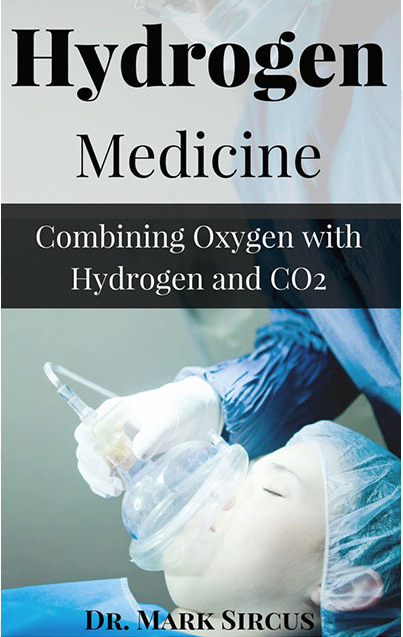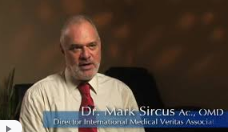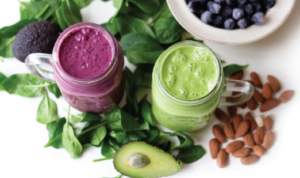Dr. Cameron Kyle-Sidell, MD is a board-certified emergency medicine physician in Brooklyn, New York. He is affiliated with Maimonides Medical Center and is crying out that something is not right in ICU departments across America in terms of how they are treating coronavirus patients.
Dr. Isaac Solaimanzadeh, practitioner of Internal Medicine at the Interfaith Medical Center in Brooklyn, is supporting what Dr. Kyle-Sidell is saying in the video about coronavirus being something more like high altitude high altitude pulmonary edema than a viral driven pneumonia. He stated:
“While anti-viral approaches and vaccines are being considered immediate countermeasures are unavailable. Both COVID-19 and HAPE exhibit a decreased ratio of arterial oxygen partial pressure to fractional inspired oxygen with concomitant hypoxia and tachypnea. There also appears to be a tendency for low carbon dioxide levels in both as well.”
Carbon dioxide is an essential medical gas. Medical gases trigger naturally occurring physiological responses, enhancing the human body’s preventive and self-healing capabilities. Medical gases include carbon dioxide, oxygen, nitrogen, nitrogen oxide and most recently hydrogen can be employed at home or in ICU to treat the worst symptoms of a coronavirus infection.
“Inhaling mixed 66.6% hydrogen and 33.3% oxygen is advised to treat the COVID-19 virus pneumonia.”
Hydrogen to the Rescue if You Cannot Breathe
Ford and GE Healthcare’s goal is to produce 50K ventilators within 100 days. Everyone is scrambling for ventilators. But what they should be scrambling to get are hydrogen inhalation devices. Too many people on ventilators die yet with hydrogen gas people can quickly start breathing with ease again. I have been saying for two years in my Hydrogen Medicine book that in the future oxygen should never be given without hydrogen, especially for critical situations like end-stage coronavirus infections.
Coronavirus medical thinking is evolving quickly. Approaches can be combined into a full protocol that will keep 99 percent alive. Since the virus that roared hit the streets of China 3 months ago medical officials have not budged an inch. The official story remains the same. No treatment no vaccine.
With hydrogen inhalation machines instead of ventilators we would being witnessing an entirely different story. Much lower death rates means we would not have had to destroy the world’s economy. We have every reason to start a Manhattan type of project and build thousands of hydrogen inhalation machines so we will not have to worry about coronaviruses killing us. These machines can be used at home and in ICU, but we would need a governmental effort to turn out enough machines to make a difference.
Prof. Zhong Nanshan, Chinese epidemiologist and pulmonologist (discovered the SARS coronavirus in 2003) recommends the hydrogen-oxygen gas mix inhalation based on data received from Chinese patients in Wuhan. National Health Commission of the People’s Republic of China says, “Inhaling mixed 66.6% hydrogen and 33.3% oxygen is advised to treat the covid-19 virus pneumonia.” It is on the top of their treatment list for seriously ill patients.
Brown’s Gas is a Mixture of Hydrogen and Oxygen
Brown’s Gas has already been endorsed for COVID-19 therapy by both the Chinese Government, EU organizations and UK Doctors. Brown’s Gas (aka HydrOxy or HHO) inhalation has been confirmed helpful to treat the pneumonia caused by coronavirus. Hydrogen molecules do not directly target the new coronavirus, but can eliminate the inflammation caused by the virus, so as to play an auxiliary therapeutic role. The most superior feature is anti-inflammatory and no side effects. Anyone can use it. This is report from national health commission of China.
Hydrogen can both down-regulate expression of oxidative-related genes and pro-inflammatory cytokine genes directly and indirectly. Oxidative stress and systemic inflammatory response syndrome have been confirmed to play critical roles in tissue and organ damages after polymicrobial sepsis injury, acute peritonitis injury, and peritonitis, which can develop into lethal sepsis with inappropriate treatment.
Until now, numerous studies have indicated cytokine storm and oxidative stress are highly associated with the pathological process when getting infected with viruses. Although cytokine storm and oxidative stress probably try to eliminate theses pathogens, they seem to generate multi-organ damage resulting in lethal clinical symptoms such as extensive pulmonary edema, alveolar and other tissue hemorrhage, and acute respiratory distress syndrome, etc.
Nitric Oxide
The same is being said about nitric oxide. In 1992, the journal Science named nitric oxide “molecule of the year.” And in 1998, UCLA pharmacologist Louis J. Ignarro shared a Nobel Prize in medicine for uncovering nitric oxide’s role as a “signaling molecule in the cardiovascular system.” Nitric oxide is a gas that is inhaled. It works by relaxing smooth muscle to widen (dilate) blood vessels, especially in the lungs. Nitric oxide is used together with a mechanical ventilator to treat respiratory failure in premature infants. Increased levels of CO2 also dilate blood vessels while positively affected oxygen disassociation.
At hospitals in Boston, Alabama, Louisiana, Sweden and Austria, researchers have launched a clinical trial to test inhaled nitric oxide in patients with mild to moderate cases of COVID-19. The trial will test whether the gas can drive down the number of patients who end up needing breathing assistance from a mechanical ventilator. For about 30 minutes two or three times a day, study participants assigned to the trial’s active arm will inhale a high dose of nitric oxide through a mask.
In Italy, where the gas was used under more haphazard conditions, the treatment appeared to dramatically boost oxygen levels in the blood of COVID-19 patients, said Dr. Lorenzo Berra, the critical-care specialist at Massachusetts General Hospital who is leading the new trial.
Flexibility of Hydrogen Administration
It’s interesting to note that H2 therapy can be administered through inhalation, oral intake of hydrogen-rich water, injection of hydrogen-rich saline, direct diffusion of hydrogen: bath, eye drops and immersion, as well as increase hydrogen in intestine. Although each delivery way has its own characteristic and advantages, injection of hydrogen-rich saline allows enough amount of hydrogen to have its own antioxidant, anti-inflammation, anti-apoptosis effect at the shortest time.




